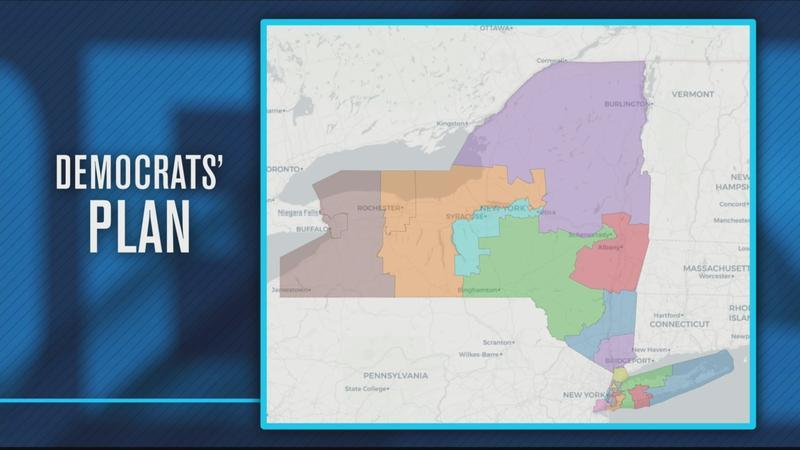In-Depth: A look at both parties’ redistricting plans
[anvplayer video=”5056834″ station=”998131″]
ROCHESTER, N.Y. (WHEC) — New Yorkers got their first look at how they’ll be picking their representatives in Congress and in Albany Wednesday.
A special state independent redistricting commission released its plans for rearranging the state’s election districts for members of Congress and state legislators.
News10NBC Reporter Charles Molineaux found that the independent commission still brought plenty of politics to the plans, so much so that Republicans and Democrats couldn’t agree on a plan so they released two different maps.
Following the 2020 Census, New York will lose a congressional seat, but establishing which one is like a game of musical chairs when everyone moves around with one less place to sit at the end.
The commission’s plans reduce the number of districts outside New York City from 11 to 10.

[News10NBC]
In both the Republicans’ and Democrats’ maps, what is now the 25th congressional district, “district b" on the Democrats map, stays pretty much the same and likely a secure seat for a Democrat, currently Rep. Joe Morelle.
Buffalo and the Albany area are similar and Democrat-dominated in both plans.
The big differences come around cities like Syracuse, Utica, and Ithaca which are all together in one, likely Democratic block in the Democrats’ new "district t" but put into three different districts in the Republicans’ plan.
Both plans also create likely Republican districts like the Democrats’ "district v" which is largely Rep. John Katko’s territory, and “district z" which is currently represented by Rep. Chris Jacobs and Rep. Tom Reed.
The Republicans create solid red zones like Genesee, Livingston, Ontario and Wyoming counties, also known as "GLOW", and one for much of the Southern Tier with a lot of Reed’s real estate.
"Not so much that it’s become more political but that the public is more aware of the process, and the implications,” said redistricting analyst Kate Donovan. “These are districts that, in most cases, in most states, will be the lines that folks are running in for the next 10 years. So that’s a really important decision and I think for a long time the public, the process is taking place in the state legislature. The legislature didn’t have a lot of incentive to collect public input."
The ultimate decision of whether any of these plans become official will be up to the state legislature.
The commission is planning to hold a new "listening tour" around the state to get input from the public, starting on Oct. 20 in Buffalo.
It’ll come to Rochester on Oct. 22.